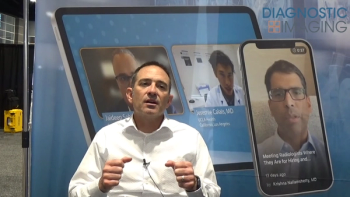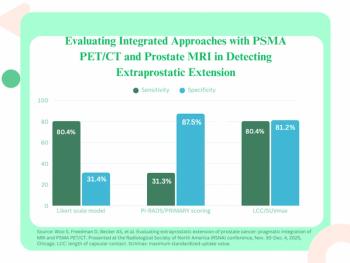
Could Structural MRI Findings Help Detect CTE During Life?
Emerging research suggests that frontotemporal atrophy on magnetic resonance imaging may be a key finding for chronic traumatic encephalopathy (CTE).
In a recently published study, researchers found that male brain donors with autopsy-confirmed chronic traumatic encephalopathy (CTE) had more severe frontotemporal atrophy and an increased chance of having a cavum septum pellucidum (CSP) on antemortem MRIs in comparison to similarly aged men with normal cognition. The study authors also found an association between greater atrophy on MRI and increased hyperphosphorylated tau (p-tau) pathology in those who had CTE.
“The inability to accurately diagnose CTE during life has presented as a significant challenge to clinicians. It has also precluded our ability to conduct research on treatment and prevention,” noted Michael L. Alosco, Ph.D., the lead author of the
For the study, researchers reviewed antemortem MRIs in 55 deceased males with autopsy-confirmed CTE and 31 males (11 of whom were deceased) with normal cognition. Employing the McKee CTE staging scheme, the study authors found that 45 of the 55 CTE brain donors had either stage III or stage IV CTE. Fifty-two of the brain donors with CTE had played American football and two had played professional ice hockey. In comparison to those who had normal cognition, the brain donors with CTE had more severe atrophy of the frontotemporal regions as well as the medial temporal lobes (MTLs), according to Dr. Alosco, an associate professor of neurology and co-director of the Alzheimer’s Disease Center Clinical Core at the Boston University School of Medicine.
“Perhaps the most surprising part of this study was how closely the patterns of atrophy overlapped with the neuroanatomical distribution of pathology observed in CTE,” said Dr. Alosco.
Dr. Alosco pointed out that similar patterns of atrophy can be seen with Alzheimer’s disease and other neurodegenerative diseases. He also noted that some of the brain donors with CTE did have comorbid Alzheimer’s disease, prion disease and frontotemporal lobar degeneration (FTLD).
However, in subsequent sensitivity analyses to exclude comorbidities, the study authors found similar effect sizes for the frontal and anterior temporal lobes after excluding brain donors who had comorbid FTLD. When looking at MTL and after excluding comorbid Alzheimer’s disease, the researchers noted an 11.3 percent increase in the effect size estimate. They also reported 10.4 percent and 10.8 percent increases, respectively, in effect size for the superior frontal and MTL when excluding prion disease.
“The fact that the effects remained provides further evidence that the patterns of atrophy we observed were related to CTE and not these other neurodegenerative diseases,” pointed out Dr. Alosco.
If the overall study findings are validated with subsequent prospective studies, Dr. Alosco said MRI could be utilized to help differentiate CTE from other tauopathies.
“As part of any memory disorder workup for a neurodegenerative disease, brain MRI is routine in order to look at patterns of atrophy,” noted Dr. Alosco. “While there is certainly overlap, different diseases have different patterns of atrophy and when combined with other clinical data (e.g., history, neuropsychological testing), it is incredibly helpful for accurate diagnosis. This approach is currently used to support diagnoses of Alzheimer’s disease, frontotemporal dementia, and others.”
Dr. Alosco said another intriguing part of the study is the association between the tau of CTE and the atrophy on MRI.
“This study provides some of the first evidence that the tau of CTE might precipitate neurodegeneration (i.e., atrophy), however, longitudinal studies are certainly needed to clarify this,” noted Dr. Alosco.
The study authors did note limitations to the study, including restricted and variable sample sizes as well as differences in the time between antemortem MRI and death due to the severity or presence of pathology being unknown at the time of MRI.
Newsletter
Stay at the forefront of radiology with the Diagnostic Imaging newsletter, delivering the latest news, clinical insights, and imaging advancements for today’s radiologists.




























